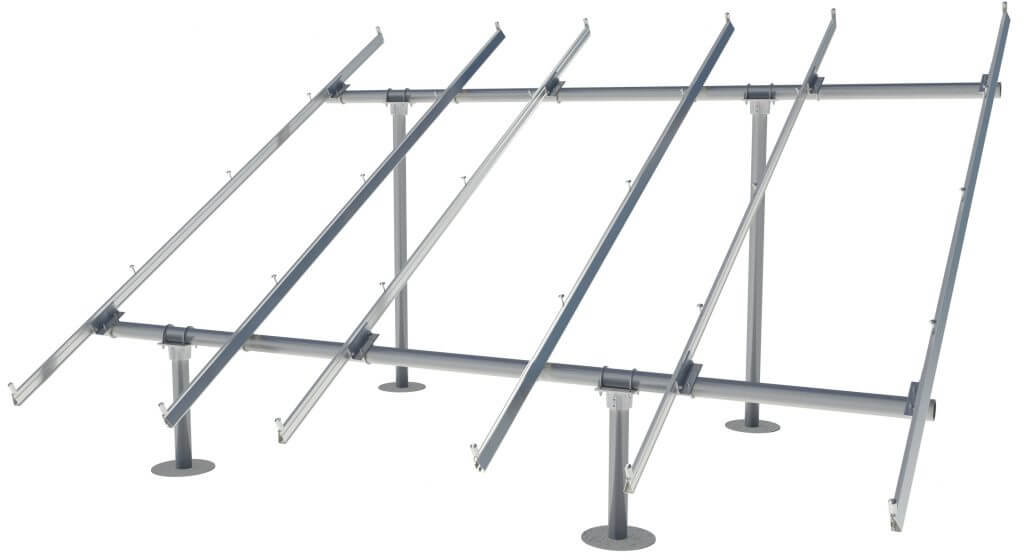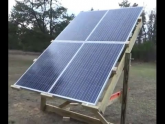You are using an out of date browser. It may not display this or other websites correctly.
You should upgrade or use an alternative browser.
You should upgrade or use an alternative browser.
Hurricane Proof Mounting System
- Thread starter Marty4321
- Start date
svetz
Works in theory! Practice? That's something else
Hi Marty4321!
If you're in Dade County, or one of the counties using their codes (e.g., Monroe), you've got some special rules on top of Florida's normal rules.
The one thing I did find out is that by using 3, instead of 2, rails means you have a wider range of panels available to you for their wind loading strength. There are some photo's of my roof here: https://diysolarforum.com/threads/an-enphase-ensemble-installation.3603/post-35283
If you're in Dade County, or one of the counties using their codes (e.g., Monroe), you've got some special rules on top of Florida's normal rules.
The one thing I did find out is that by using 3, instead of 2, rails means you have a wider range of panels available to you for their wind loading strength. There are some photo's of my roof here: https://diysolarforum.com/threads/an-enphase-ensemble-installation.3603/post-35283
schmism
Solar Addict
you can check out ironridge website, they offer a tool to do some design work on the fly for a rack system including wind speed

 www.ironridge.com
www.ironridge.com
They will cover up to 150mph. Your request to "withstand a hurricane". I assume you mean not fly away, but as most people know that live in hurricane prone areas, its the debris you have to worry about, so firmly planted to the ground wont help when the neighbors deck chairs come hurtling at your array at 100mph.

XR Ground Mount System
Strength meets flexibility. The IronRidge Ground Mount System combines our XR1000 Rails with locally-sourced steel pipes or mechanical tubing, to create a cost-effective structure capable of handling any site or terrain challenge.
They will cover up to 150mph. Your request to "withstand a hurricane". I assume you mean not fly away, but as most people know that live in hurricane prone areas, its the debris you have to worry about, so firmly planted to the ground wont help when the neighbors deck chairs come hurtling at your array at 100mph.
RCinFLA
Solar Wizard
- Joined
- Jun 21, 2020
- Messages
- 3,561
I have worked in hurricane relief, most of the ruined solar panels I have seen were from flying debris
Same here. 10 to 40 lb branches hurled at 40 to 80 mph. I had 15 cement flat tiles broken up on roof. In 2004 my 12 foot expanded screen dish on 4" thick wall galvanized pipe pole set in concrete was snapped over.
Getting gas afterwards can be a pain. I considered having light weight flex panels to spread out afterwards but still too expensive to have enough panels to make a dent in gas consumption. I get the most out of gas used by running gen at 75% rated load to charge batteries for several hours twice a day. Most people are running 5kVA noise makers averaging 500 to 800 VA power output.
What really freaks out people is running my 4 ton central air cond while running a Yamaha EF3000 inverter generator. I roll out a 15kVA gen about 7 pm to do full charging on batteries so I can go silent during night.
ln Oct 2005 there was a freak cold front that came though after storm. Neighborhood was without power for about a week. What got people the most was taking cold showers. I ran my next door neighbor's hot water heater on my 15kVA gen with wheels on it. Word got around and neighbors were showing up on my door step with 5 gallon can of gas asking if I would warm up one tank of water for them in their hot water heaters. When power came back on I had more gas left then I had stocked up on before hurricane struck.
Last edited:
nosys70
Solar Enthusiast
- Joined
- Jan 15, 2020
- Messages
- 839
if you need to have the panels only after hurricane, then you should store them in a safe place and install only if needed.
to keep the battery charging, you can buy an all-in-one MPP that will just take care of that when grid is available.
you can also build some folding mechanism
 energywave.net
energywave.net
to keep the battery charging, you can buy an all-in-one MPP that will just take care of that when grid is available.
you can also build some folding mechanism
500 Watt Foldable Solar Panel | Energy Wave
Last edited:
eXodus
Solar Addict
- Joined
- Jul 27, 2020
- Messages
- 1,482
Guess you have to love Florida like I do.
The closer you are to the ground the lower the wind speed. The question is, do you need permits or not?
Because if you are only using 4 panels - I would build something sturdy out of wood. But that depends on how much space you got.
4 corner posts with concrete into the ground and a few 2x6s or 2x8 with some large lag bolts.

The closer you are to the ground the lower the wind speed. The question is, do you need permits or not?
Because if you are only using 4 panels - I would build something sturdy out of wood. But that depends on how much space you got.
4 corner posts with concrete into the ground and a few 2x6s or 2x8 with some large lag bolts.

Same here. 10 to 40 lb branches hurled at 40 to 80 mph. I had 15 cement flat tiles broken up on roof. In 2004 my 12 foot expanded screen dish on 4" thick wall galvanized pipe pole set in concrete was snapped over.
Getting gas afterwards can be a pain. I considered having light weight flex panels to spread out afterwards but still too expensive to have enough panels to make a dent in gas consumption. I get the most out of gas used by running gen at 75% rated load to charge batteries for several hours twice a day. Most people are running 5kVA noise makers averaging 500 to 800 VA power output.
Some places I have been after a hurricane would still have 30%-50% of their panels intact but no electricity. It was tied into the grid and the grid was dead.
In Puerto Rico after Maria many parts of the grid were dead for more then a month. Some people would say they are going to set it up different for the next one. Many of the smaller $250-$500 generators failed after a week or two of running 12hrs a day. People would get up at 8am and turn them on all day, until.. they died.
I drove by a few of the massive solar farms in Puerto Rico after Maria. The panels on the solar farms were on foundation casings a few feet from the ground. It seemed like most panels would get damaged then peel and rip away in the wind. Humacao was a big solar farm in PR that was in the eye of Maria 157+ mph wind full of debris. It was crazy to see that many panels obliterated, thousands in pieces all over. Even much of the support frames and casings mangled.
nosys70
Solar Enthusiast
- Joined
- Jan 15, 2020
- Messages
- 839
that is why you dig a rectangle into the ground, make a recessed cement base and put a foldable frame into it.
you add a cover that can be bolted in several places. (even some steel strip to reinforce cover.)
if you take care to fold the panels into the case (hurricane rarely came by surprise) , let it go , unfold the panel again, there should be no surprise.
it is minimal work and should last forever.
you can take occasion to mount led panels on the frame so you can eventually work at night.
if the house is flat roof style, you can build rectangle with concrete brick, so the panels can be layed flat on the roof, inside the rectangle
same principle with a cover (plywood) bolted or secured with bars.

you add a cover that can be bolted in several places. (even some steel strip to reinforce cover.)
if you take care to fold the panels into the case (hurricane rarely came by surprise) , let it go , unfold the panel again, there should be no surprise.
it is minimal work and should last forever.
you can take occasion to mount led panels on the frame so you can eventually work at night.
if the house is flat roof style, you can build rectangle with concrete brick, so the panels can be layed flat on the roof, inside the rectangle
same principle with a cover (plywood) bolted or secured with bars.

Last edited:
BoloMKXXVIII
Fully Charged
After surviving hurricane Andrew in 1992, I will keep my panels indoors, covered up. Lost most of the roof in Andrew, had someone else's roof in the front yard, my father's truck was upside down, mine was Swiss cheese, no way to get additional gas for generators, roads blocked and debris everywhere. I don't believe you can make panels safe outside. But what do I know? I am still carrying the scars (mentally and physically) from a hurricane.
svetz
Works in theory! Practice? That's something else
I was close to an inspector the other day and someone joked "well, that's hurricane proof now!" The inspector looked at it and said, "Hurricane resistant... no such thing as hurricane proof".
Prefersdirt
Solar Enthusiast
- Joined
- Sep 28, 2019
- Messages
- 375
I was close to an inspector the other day and someone joked "well, that's hurricane proof now!" The inspector looked at it and said, "Hurricane resistant... no such thing as hurricane proof".
I can see that. Sort of like "make it idiot proof" and I will show you a bigger idiot!
WYtreasure
It's not happy hour, I'm just like this.
that is why you dig a rectangle into the ground, make a recessed cement base and put a foldable frame into it.
you add a cover that can be bolted in several places. (even some steel strip to reinforce cover.)
I would love to hear more of your ideas, I'm living in the land of Big Wind and have watched many things blow away.
Any specifics you have to share on this idea would be welcomed with open arms.
robby
Photon Vampire
- Joined
- May 1, 2021
- Messages
- 4,117
I had that same idea for ground mounting. The only thing is that you have to make sure that when the cover goes on the whole thing is completely water proof or the panels may get flooded.that is why you dig a rectangle into the ground, make a recessed cement base and put a foldable frame into it.
you add a cover that can be bolted in several places. (even some steel strip to reinforce cover.)
if you take care to fold the panels into the case (hurricane rarely came by surprise) , let it go , unfold the panel again, there should be no surprise.
it is minimal work and should last forever.
you can take occasion to mount led panels on the frame so you can eventually work at night.
if the house is flat roof style, you can build rectangle with concrete brick, so the panels can be layed flat on the roof, inside the rectangle
same principle with a cover (plywood) bolted or secured with bars.
View attachment 20625
I recommend that you get on a website, and find a wind loading chart. After our 140mph winds here last year, I did so, for a ground mounted array.
Bottom line was minimum 6" diameter, heavy wall pipe, 9' into the ground, in a 36" concrete SonoTube. That was good for about the same height above ground. But they recommended going to 8" pipe for a bit more insurance. With all the destruction here, and Covid, I couldn't get a contractor anyway, and didn't have time to do it myself.
There were a LOT of shipping containers blown all over the place, and that pretty much spoiled the idea for me of buying one, and putting an array on top. Still considering the overall idea, but with minimum 30" cement SonoTubes at all corners at least 6-7' deep, with embedded steel plates, and weld the container down.
You cannot have any idea what it is like until you are in one of these events. Especially how clueless people are, lined up at gas stations for half a day waiting to get gas, and they don't realize that there is no power source to pump the gas. There were vehicles abandoned in long lines, because they ran out of gas while waiting, and were running their air conditioners the whole time!
Bottom line was minimum 6" diameter, heavy wall pipe, 9' into the ground, in a 36" concrete SonoTube. That was good for about the same height above ground. But they recommended going to 8" pipe for a bit more insurance. With all the destruction here, and Covid, I couldn't get a contractor anyway, and didn't have time to do it myself.
There were a LOT of shipping containers blown all over the place, and that pretty much spoiled the idea for me of buying one, and putting an array on top. Still considering the overall idea, but with minimum 30" cement SonoTubes at all corners at least 6-7' deep, with embedded steel plates, and weld the container down.
You cannot have any idea what it is like until you are in one of these events. Especially how clueless people are, lined up at gas stations for half a day waiting to get gas, and they don't realize that there is no power source to pump the gas. There were vehicles abandoned in long lines, because they ran out of gas while waiting, and were running their air conditioners the whole time!
I used the "snapnrack" ground mount system, as hurricanes have hit us many times.
It is rated for 170mph. Couple tons of concrete, deep piers, etc.
 snapnrack.com
snapnrack.com
We are 40-50 miles inland, (Central Florida), so winds here have not exceeded much over 100mph, so far.
I mounted the panels as low to the ground as possible.
No way I can take them down for a storm.
I could cover them with plywood or OSB, but then how to secure a wood cover, so that it does not become a flying missile?
Plan “B”, just buy a pallet of spare panels and store them?
It is rated for 170mph. Couple tons of concrete, deep piers, etc.
200 Ground Mount System - SnapNrack
We are 40-50 miles inland, (Central Florida), so winds here have not exceeded much over 100mph, so far.
I mounted the panels as low to the ground as possible.
No way I can take them down for a storm.
I could cover them with plywood or OSB, but then how to secure a wood cover, so that it does not become a flying missile?
Plan “B”, just buy a pallet of spare panels and store them?
WYtreasure
It's not happy hour, I'm just like this.
There were a LOT of shipping containers blown all over the place, and that pretty much spoiled the idea for me of buying one, and putting an array on top. Still considering the overall idea, but with minimum 30" cement SonoTubes at all corners at least 6-7' deep, with embedded steel plates, and weld the container down.
How about burying the shipping container, about half way. Maybe ramp up the soil around the container to help the wind keep moving along.
Mother earth likes to hold on to herself and stuff covered with soil.
Rocksnsalt
Solar Enthusiast
with hurricanes ?… There’s high wind… and then there’s often flooding…
Similar threads
- Replies
- 9
- Views
- 611
- Replies
- 5
- Views
- 260


